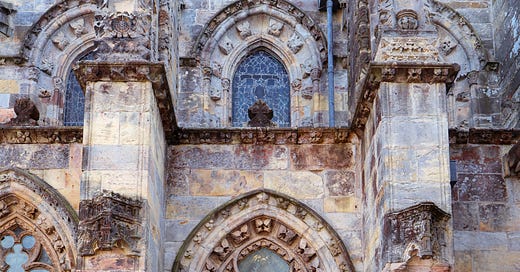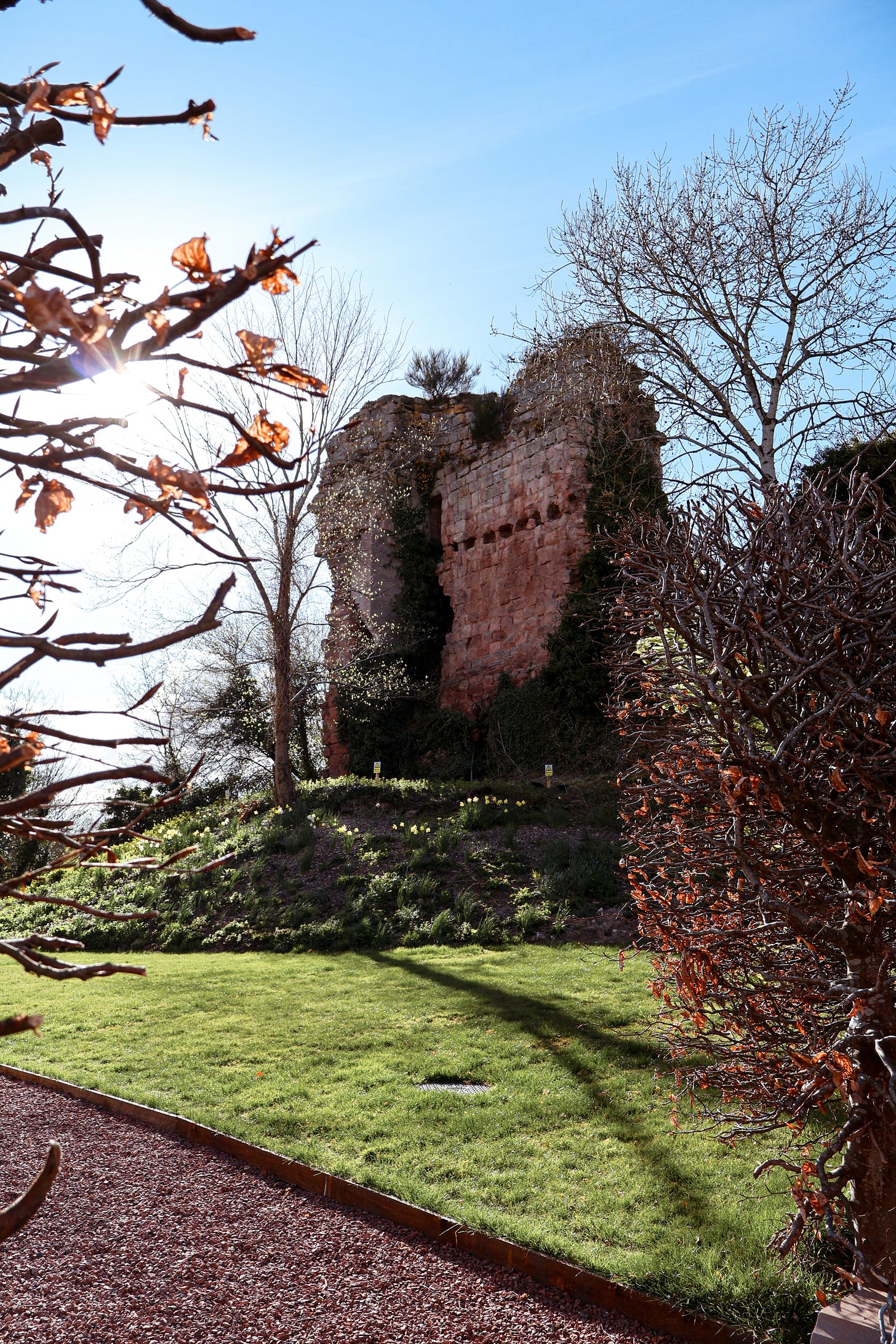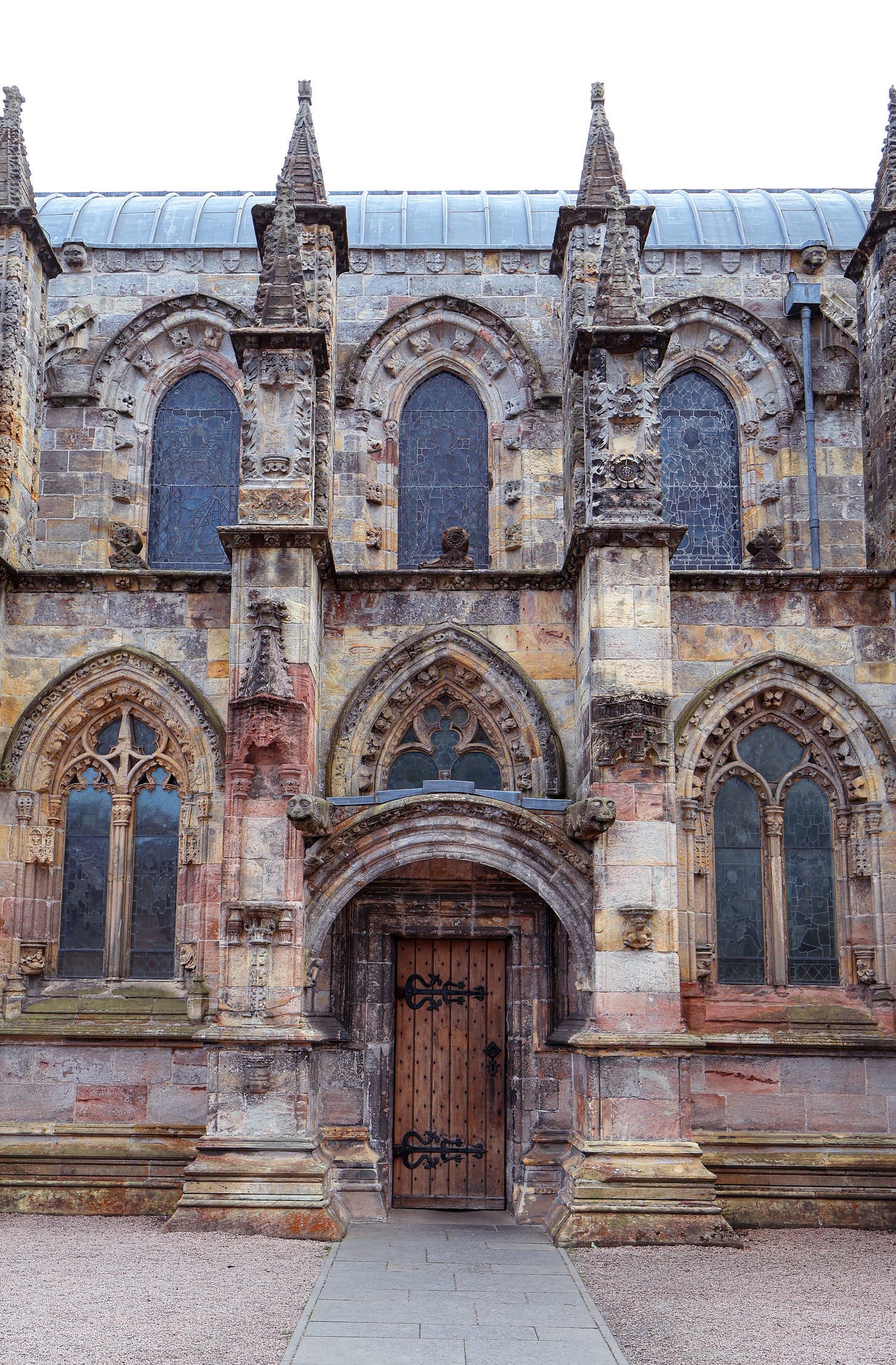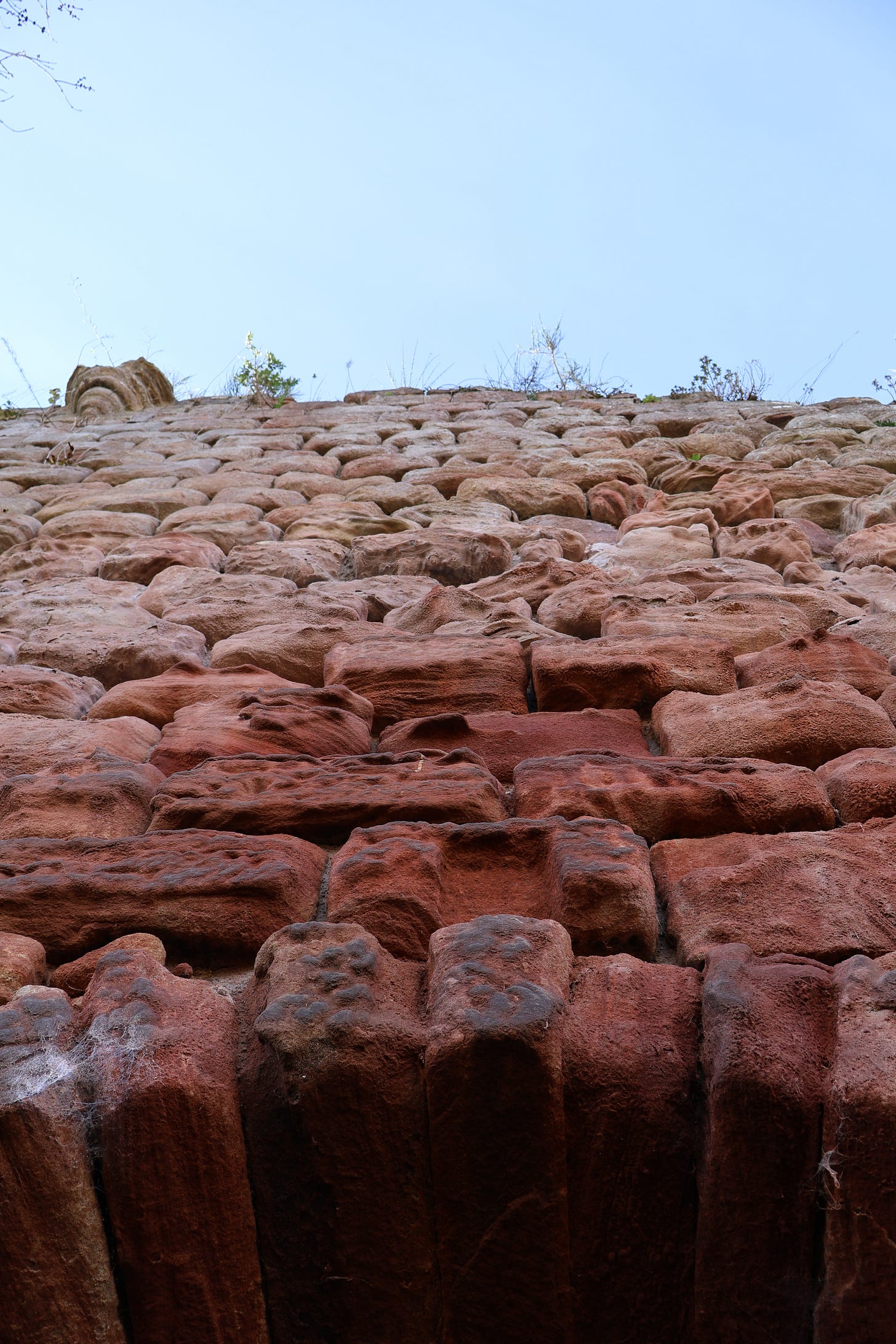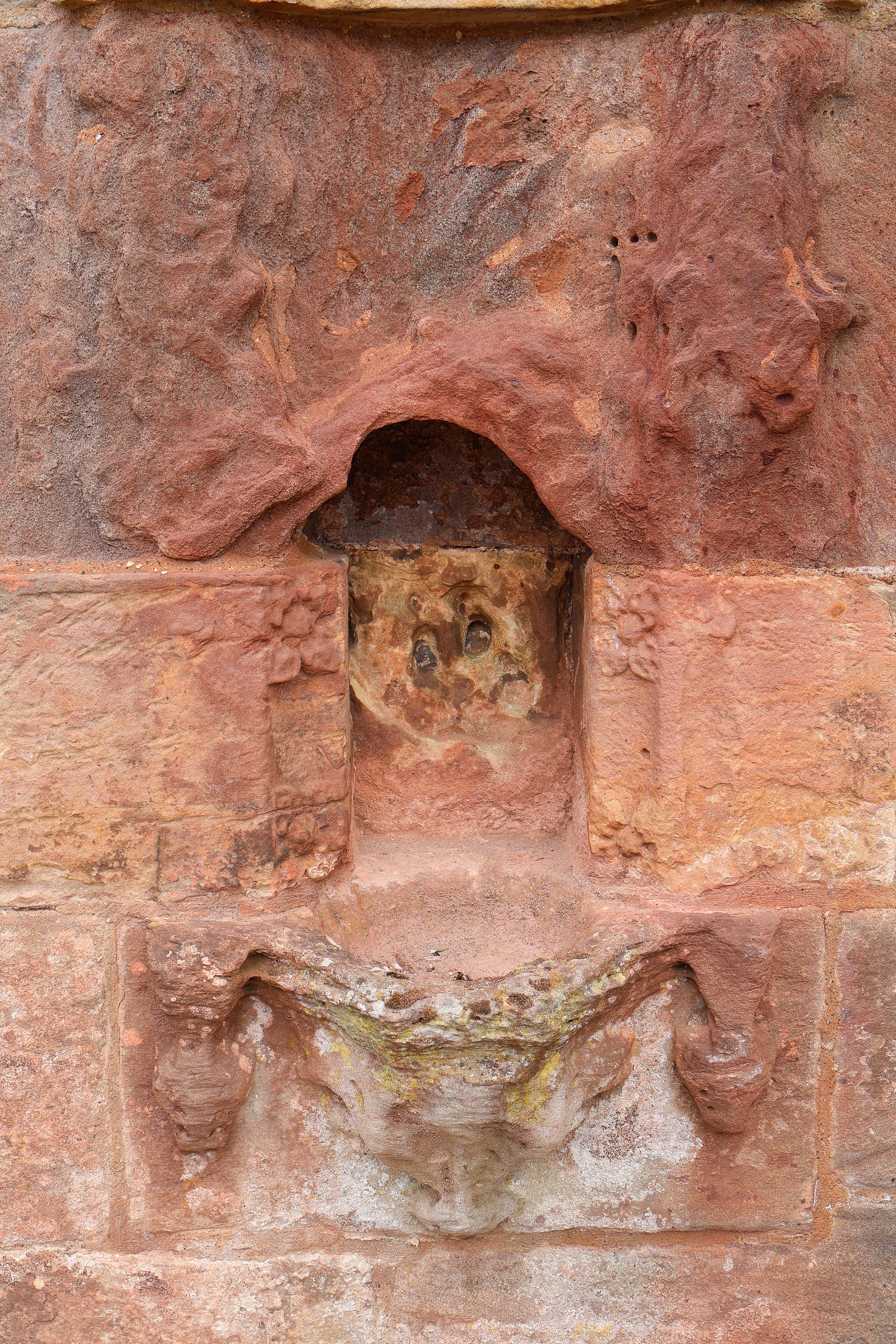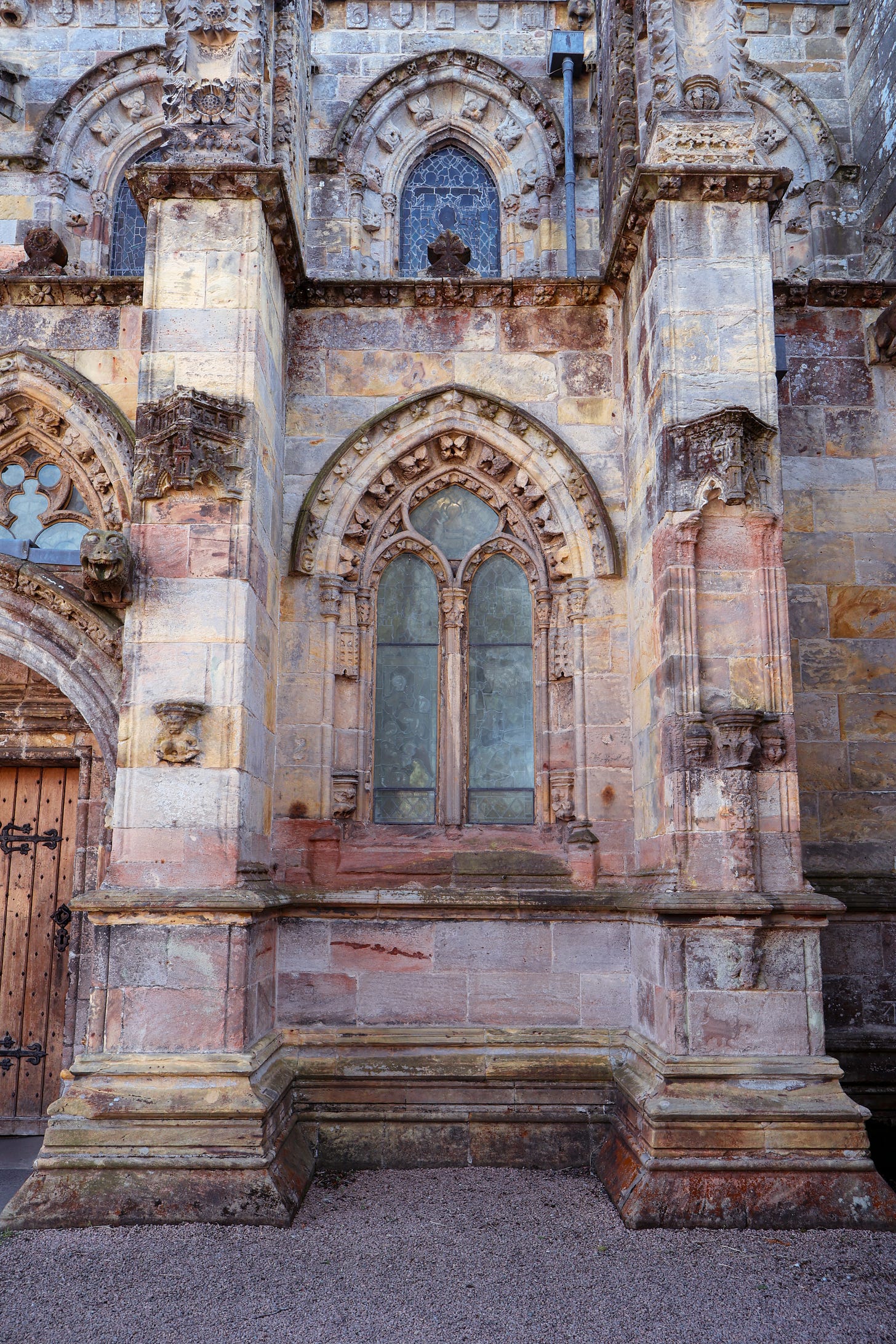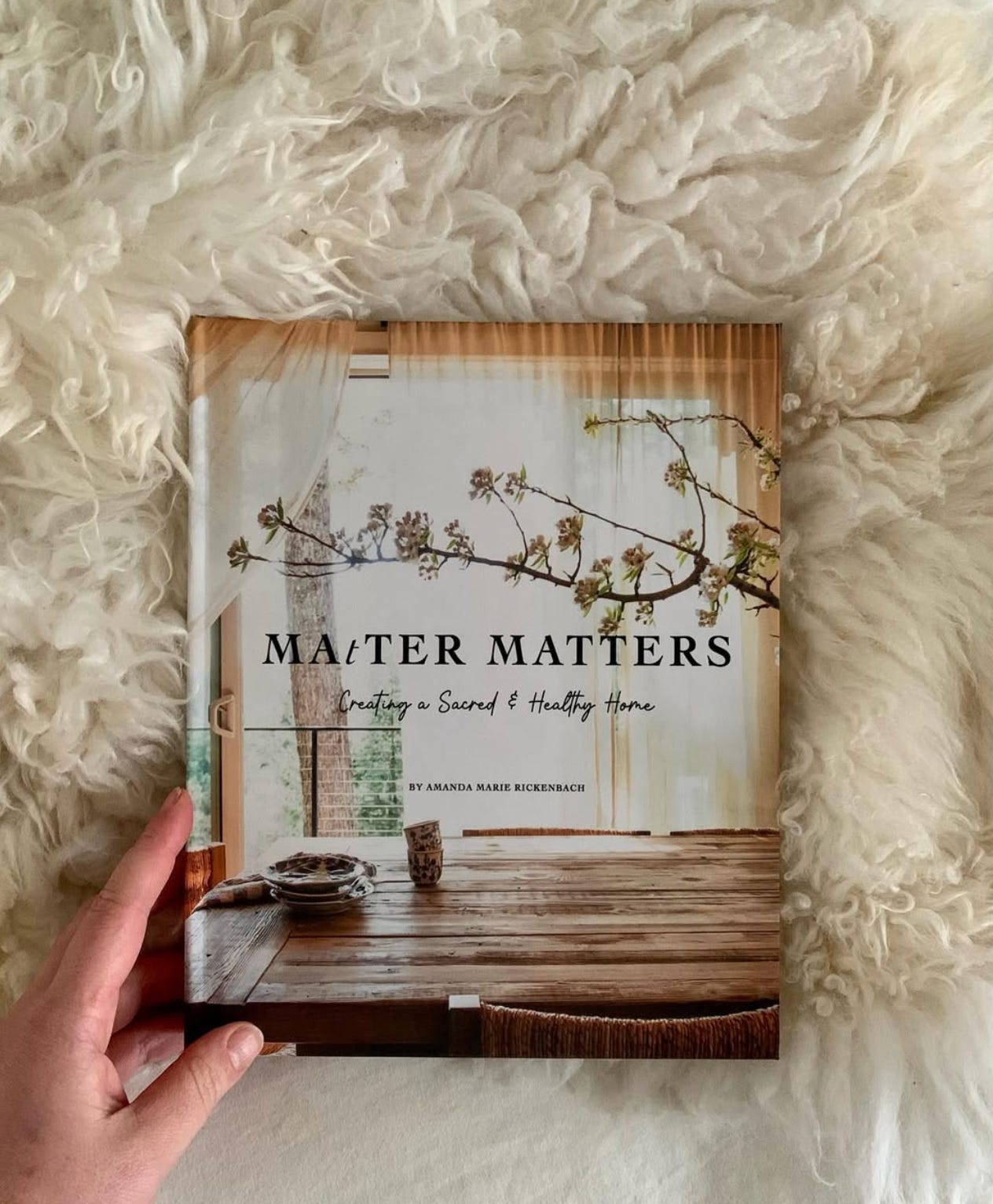My work, creating sacred space in the home, is about weaving intention, beauty, and presence into the places where we live and love, so that our homes become alive with spirit and purpose.
This calling didn’t begin with me. It’s been carried through my blood for centuries.
One thread of my ancestry reaches back to the St. Clairs (or Sinclairs) who built Rosslyn Castle and lived on the land that cradles Rosslyn Chapel, one of the most spiritually charged structures in the world. My 25th great-grandmother’s brother built the chapel itself, embedding within its very stones the codes of harmony, mystery, and the divine feminine.
It was not just a building. It was a spiritual instrument.
Rosslyn feels less like a place and more like a memory I’m returning to. But then, you might hear that from me a lot.
It is a place where symbols and stories whisper from every carved surface. Rosslyn Chapel was not only built as a monument to faith but as a vessel. An energetic container of the mystical and the divine feminine.
While visiting in April, my dear friend told me a magical detail. Some of the chapels parapets were designed to house bees. Bees. The priestesses of the natural world. Long before modern science confirmed their critical role in the balance of ecosystems, bees were revered for their mysterious intelligence. Their buzzing resonates at a high vibration, said to stimulate the pineal gland and promote healing states. They say that beekeepers have longer lives than any other profession of course. Within the hive, there is no hierarchy of domination—only function, purpose, and collective harmony. It’s no wonder that bees have long been associated with the feminine mysteries and devotion.
To imagine that the builders of Rosslyn designed it with bees in mind is to glimpse a world where spiritual architecture integrated the natural and the sacred without separation.
And then there is the pink sandstone. Pink, the color that vibrates at the frequency of the womb and the heart. It is the feminine speaking, not as passive or ornamental, but as deeply alive. To step into Rosslyn was to enter the womb of the divine feminine. To be held, softened, and transformed.
Sandstone is both strong and soft. Durable enough to support centuries of architecture, yet pliable enough to be shaped into intricate carvings and sacred symbols. It reminds me of the feminine energy of a river: flowing, changeable, and unstoppable over time.
Rosslyn Chapel and it’s sandstone is a living expression of this strength. Its walls rise not in opposition to the elements, but in harmony with them. Like water shaping stone, the builders carved beauty in. A story of endurance and grace, of yielding without breaking.
And sandstone doesn’t only hold form, it holds memory. Its porous nature allows it to absorb the energy of ritual, prayer, and presence. It listens. It remembers. This makes it the perfect material for sacred architecture. In Rosslyn, where musical patterns are etched into pillars and ceiling, the stone truly becomes a vessel for vibration.
But in an attempt to “save” the building from the plants growing inside, men later covered the interior stonework in a white cement sealant. This act silenced the stone. It covered the chapel’s natural colors and altered its ability to breathe, both physically and energetically. What was once vibrant with the color and life became muted beneath a mask of preservation. In trying to protect it, they unintentionally imprisoned it.
But Rosslyn is not silent. She still sings. Even if we can’t experience her the way we are meant to.
Musical patterns are carved into the stone itself—what has come to be known as the “Rosslyn Motet.” These carvings suggest frequencies intended to be played and felt. Stone transformed into sound. Form into vibration. The harmony between heaven and earth etched into stone.
Isn’t all of creation music? Isn’t the original sound of the feminine a HUM?
In 2007, Stuart Mitchell, a Scottish composer, along with his father Thomas, studied the geometric carvings on Rosslyn Chapel’s pillars and ceilings using a technique called cymatics, the science of visualizing sound vibrations. Cymatics reveals how sound waves create physical patterns in a medium like sand or water. When the Mitchells applied this method, they discovered that the chapel’s carvings matched specific Chladni patterns, the unique shapes formed by vibrations on a solid surface when a certain frequnecy is played.
By analyzing these shapes, the Mitchells were able to decode the patterns into musical notes, effectively translating stone into sound. They found that the carvings formed a complex, layered musical composition—a motet—intended not just for the eyes, but for the soul to hear and feel.
This discovery transforms Rosslyn Chapel from a static stone building into a living instrument, where form becomes music. It’s a physical embodiment of the ancient belief that music is a bridge between the earthly and the divine. It invites us to experience sacred space as a place where stone and spirit sing together.
This makes me tear up writing it.
Rosslyn is a living temple to the divine feminine and healing frequencies.
It is not a religious space.
Healing frequencies carved into living pink sand stones. Bees buzzing in the parapets outside of the nave. Built on Mary Magdalene’s ley line. Connected to the grail lore. And so much more mysticism.
Rosslyn both sings and tells stories. She remembers harmony, devotion, and the partnership between masculine and feminine, human hands and sacred purpose.
In a world where too many are disconnected from their roots, my return to this place was a remembering of who I am, the bloodline I carry, and my purpose. May she help you remember too.
-amanda
If you are interested in journeying to Scotland with me in 2026, I am crafting some special opportunities. Please share your email to stay informed.
If you would like to go deeper into creating a sacred and physically healthy home. Please check out my book!


